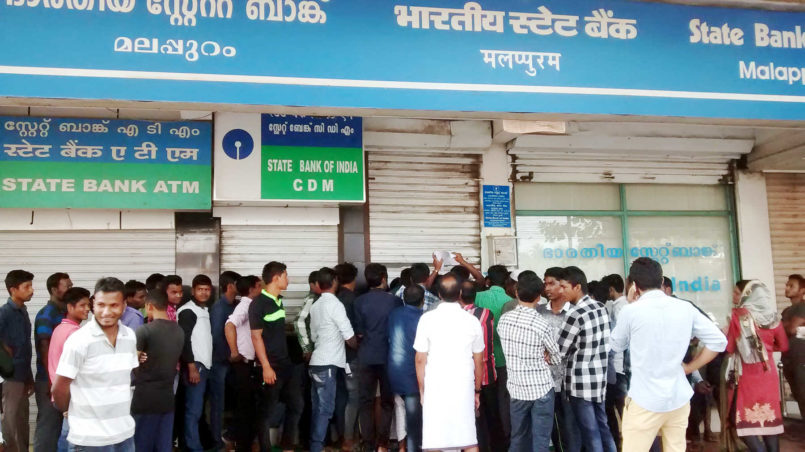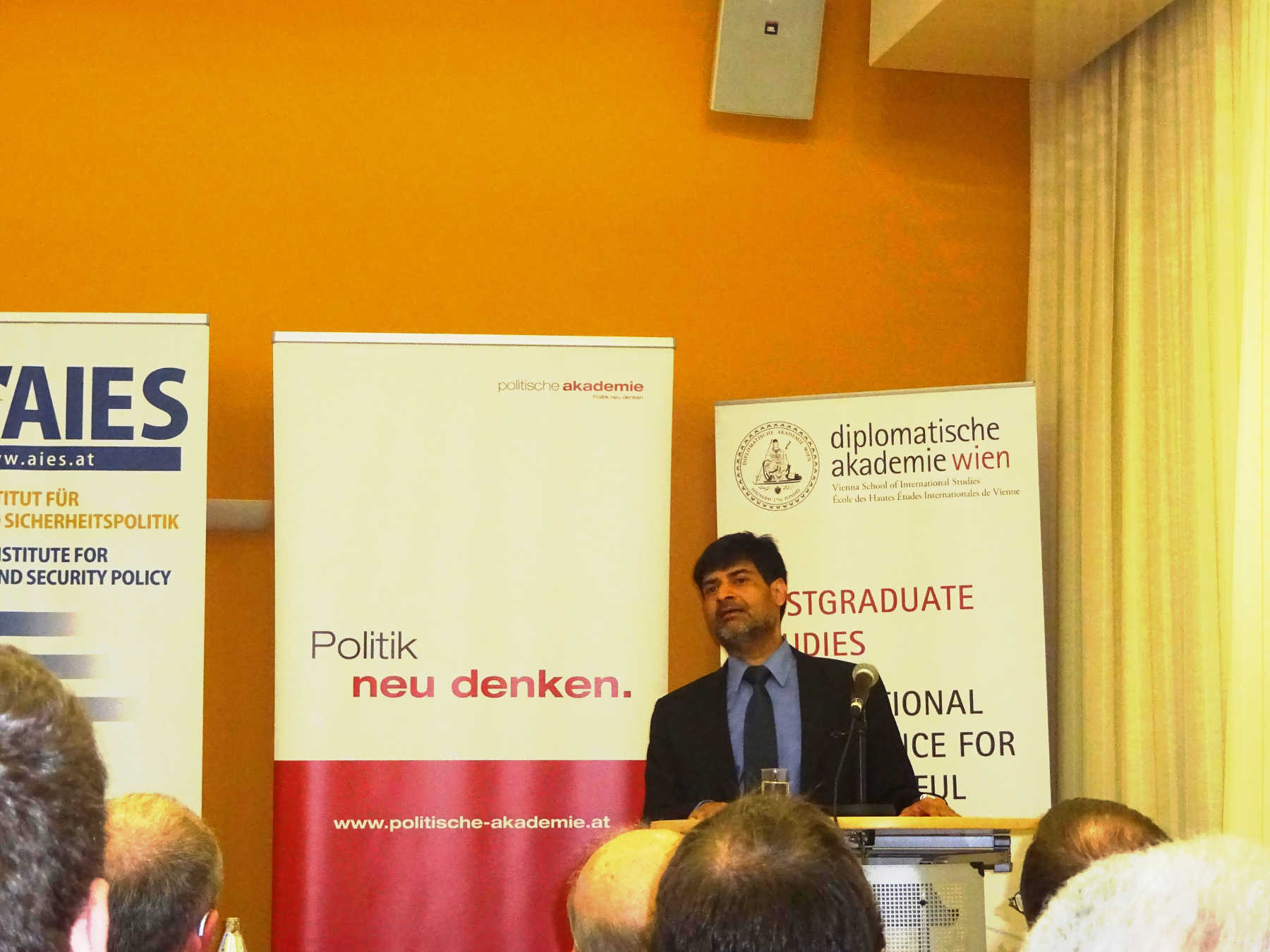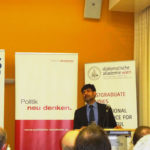India – The Future of a Giant

India was the focus of an event at the Diplomatic Academy: a country which is given much too little attention internationally in comparison to its economic strength and development.
Since the New Delhi Consensus in 1991, India has changed greatly.
according to Samir Saran, advisor to the Indian government and the World Economic Forum for South East Asia. He sees four major trends for this period of time:
- In 20 years, India’s gross domestic product, with an increase of 6-8%, will rise to 10 trillion dollars, thereby including the country in the list of one of the largest global markets. However, institutions will not grow as quickly as the economy and this will lead to problems.
- In 2037 India will provide approximately 10 billion dollars to other countries as development aid which will result in India becoming an important player in this area. The country will export its own ethos and experiences to other countries and, because of this, could possibly enter into conflicts with the ideas of China or the OECD.
- As the military power will only grow half as much as the economy (India’s tax-to-GDP ration is only 16%), India (in contrast to China) will not plan any interventions or participate in peace missions.
- Due to the strong technological orientation, the country will not need cheap labour. It has hardly any cheap resources and (due to nationalist tendencies worldwide) only limited access to the world market for its growth.

Further, Saran recognises four trends which will form India in the next two decades:
- The great project of the 20th century was for the State to provide education, infrastructure and social safety. The State either dealt with this directly or by means of licences for private organisations. In the 21st century, companies in the technology and pharmaceutical sectors are at the heart of the development in India and these do not want State influence but rather free markets.
- The last census in 2011 showed that the cities are growing faster than the rate at which the new residents can be taken in. In villages, conflicts are resolved by the community – this no longer functions in the anonymity of the city. This leads to blockades and demonstrations which Saran refers to as the ruralisation of cities.
- The demographic development shows a growing group of 5 to 25 year olds who, in the meantime, number 450 million. In the case of support of other countries, India has to do more for its youth, Saran said with a gentle smile: if only 1,000 dollars were given per recipient of education, this would amount to 450 billion dollars per year but India’s total State budget is only 380 billion dollars. There are similar financial problems in the health sector. And in around 30 years, India will have 300 million pensioners who also require financing. Some Indian states have 10% fewer women than men. Here infrastructure and work have to develop as otherwise there could be disruption in these “testosterone fuelled societies”. Approximately 12 million jobs have to be created every year in India – the real figure is currently 7-8 million.
- Globalisation will partially break down the blatant difference in Indian society – however, only on the economic level and not on the cultural. It remains to be seen how people will become integrated in this new world.
For the most part, the 116 million Muslims of India live in bad areas. That today they live relatively peacefully is, according to Saran, above all due to the “community management system“: in villages, the elders of families or the village usually seek a settlement between disputing parties.
According to Suran, India is the first green “miracle of growth“:
Process innovation is India’s greatest strength. One billion Indians already own a mobile phone, the number of internet users grows by 8 million per month. By means of the Digital Citizenship payment system, even small amounts can be transferred without any charges. The digital transformation of India has quickly and efficiently reduced the costs for the economy and the population. For example, the health system, has been centralised via the digital community management system, whereby much bureaucracy has been spared.
The fear that the reduced bureaucracy will lead to many unemployed is not shared by Saran:
Mobility is extremely important in India – but not that of a physical nature: of 1,000 inhabitants, only 9.82 possess a car. The country focuses on digital mobility, transport routes are “uberised“.
According to Saran, an asymmetry dominates in Asia:
the economically strong countries such as China or India are not the big players in the military sector while others, such as Russia or Pakistan, although strong in military terms, are rather insignificant in economic terms. The border conflicts which regularly arise in Asia (Vietnam, Kashmir, South China Sea, etc.) are related to the digital but also the cultural changes of the countries.
In relation to China, Saran believes that India will be at a disadvantage in 10-15 years:
this is the price of democracy. He does not consider the one belt one road strategy and the associated high investments in infrastructure projects to be useful because, at the latest in 25 years, we will be able to print everything that we need in life from a 3D printer. Further, in particular in the context of the re-orientation of the USA, India is to be understood as the most important pioneer of the liberal world order:
The Indian expert is worried about who will assume the role of the officer friendly in the internet, which exists in India, in western social media. The bullies use the internet better for their own purposes than the masses: in order to combat these, there have to be community organs.
Translation German-English: Donna Stockenhuber
Credits
| Image | Title | Author | License |
|---|---|---|---|
 |
currency demonetization in india 2016 | Kottakkalnet | CC BY-SA 4.0 |
 |
Samir Saran | Christian Janisch | CC BY-SA 4.0 |
